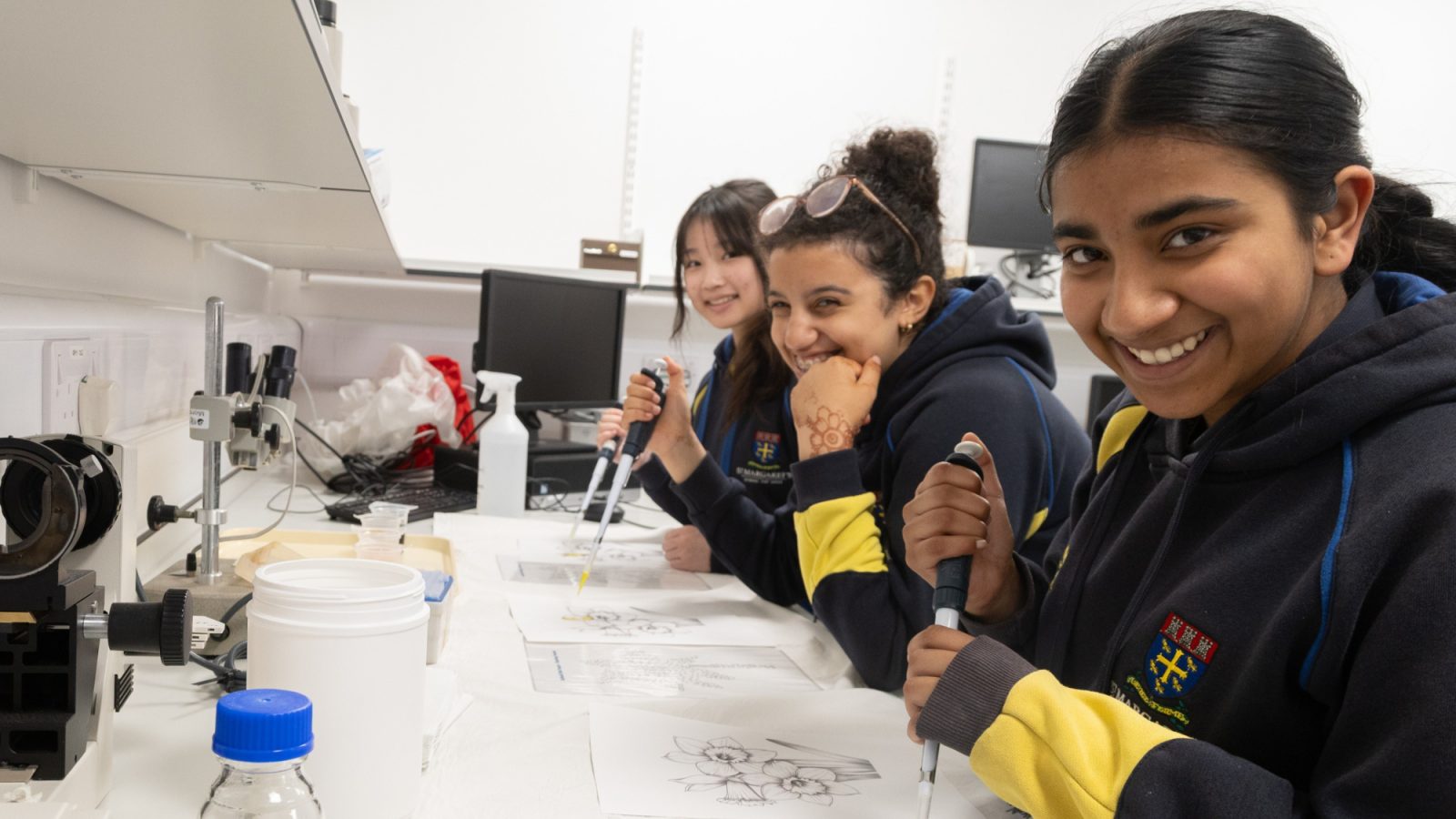Students from St Margaret’s School for Girls in Aberdeen visited The James Hutton Institute in Invergowrie as part of the Daffodil DNA project co-ordinated by the Hutton and The University of Dundee.
The school is one of 20 schools across the UK, from Orkney to Jersey, taking part in this project which is working to obtain genetic data on daffodils, a very understudied, yet valuable genus. Alongside professionals and academics, the students are growing various daffodil varieties, extracting DNA from their leaves and using innovative techniques to assemble the genome of the chloroplast – the structure within the cells of plants that is the site of photosynthesis.
The young people enjoyed a tour a tour of the Hutton’s facilities and were introduced to various microscopes and imaging methods. It was also a chance for them to find out more about the opportunities open to them in science.
Dr Alison Roberts, head of cell biology and imaging group at the Hutton, said: “The Daffodil DNA Project is a fantastic way for STEM partners to interact with secondary schools and provide access to cutting-edge research techniques for young people. On-site visits, are a great opportunity for us to show off our fantastic imaging facilities, support the secondary school science curriculum and give pupils the chance to meet research scientists ‘in the wild’ to ask questions and inform their career choices.”

Abby Miller, biology teacher at St Margaret’s said: “Our partnership with The James Hutton Institute through the Daffodil DNA project has been of huge benefit to our pupils (known as Team Daff), and we intend for the links we have established to long outlive the project.
“Our pupils have experienced firsthand research-level techniques in DNA extraction and sequencing and applied their learning on cell structure to plant pigments through hands-on in-school and onsite labs with Dr Roberts and her team. We are immensely grateful for the opportunity to experience a working research environment and to immerse ourselves in the wonders of cells on a molecular and structural level with state-of-the-art technology and expertise. Today's visit has brought many aspects of our curriculum to life and allowed the girls to see science careers in action.”
The students were clearly inspired by their visit. 14-year-old Aditi said: “I learned many new things, from how to use a pipette with control to the different pigments of colours which make up a flower: anthocyanins, carotenoids, belatin, chlorophyll. It made me realise how precise and accurate you need to be during these experiments and allowed me to imagine how the world of science will develop. The trip was so interesting. It gave me an insight into the different way of working in science and continues to convince me to work in a science related job.”

Fiona, 15, said: “I found the visit to the Hutton today very insightful. I think the work they do is very important and they should receive more credit for it as most people overlook plant biology. It helped me to link what I have learned in class into real life occupations and visually see the processes we have learned during Higher biology and see the cells more clearly.”
The project allows schools to develop long lasting relationships with scientists. Those taking part now have ownership of equipment such as a thermocycler, most commonly used to amplify segments of DNA, to allow other practical work beyond and in addition to this project. Access to a thermocycler was identified as a key opportunity missing in practical work by the Royal Society of Biology’s Education Research Group.
More information on the Daffodil DNA Project can be found here:
The Daffodil DNA Project | Growing people, growing places: an enquiry into decoding Scottish daffodils